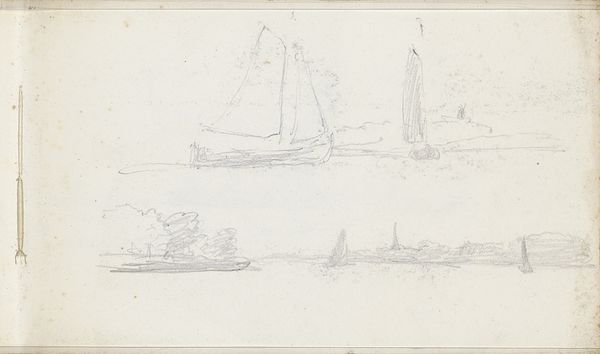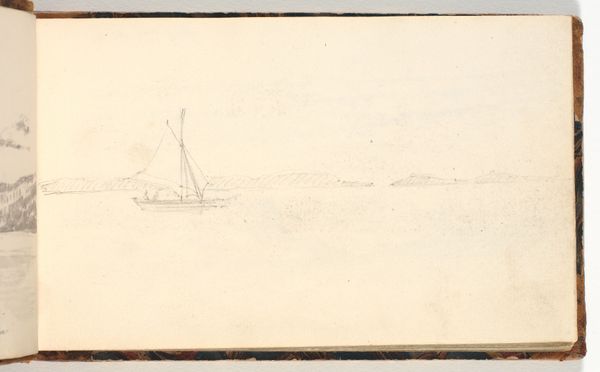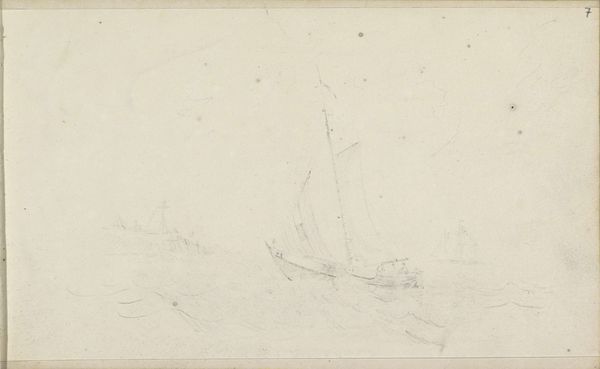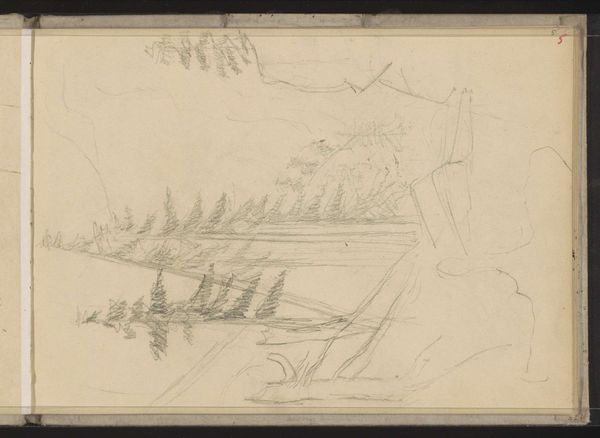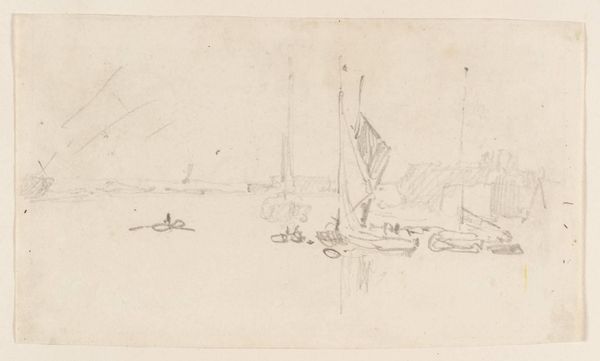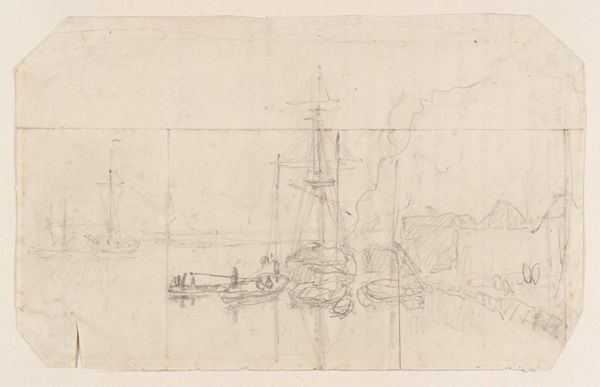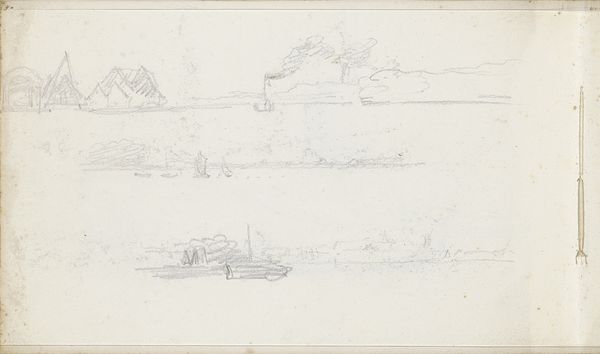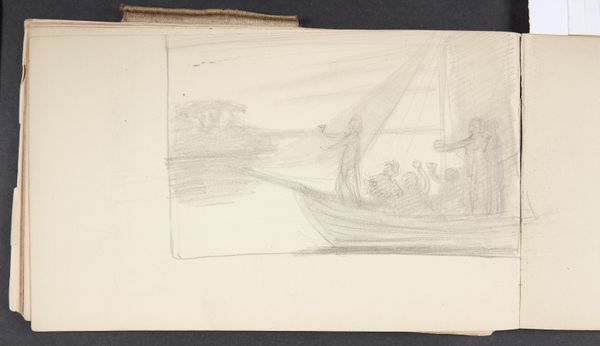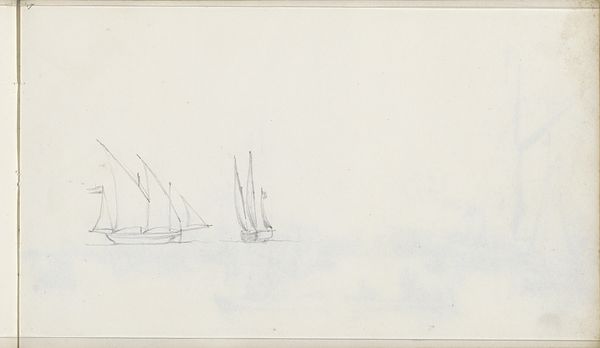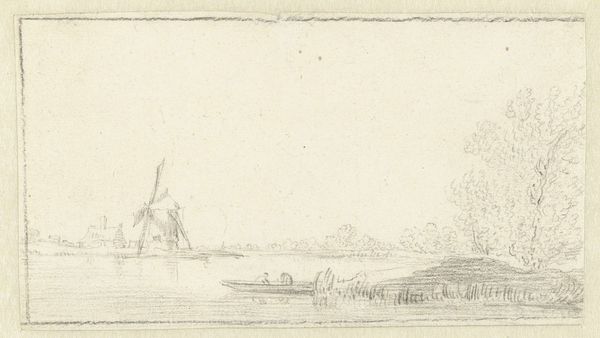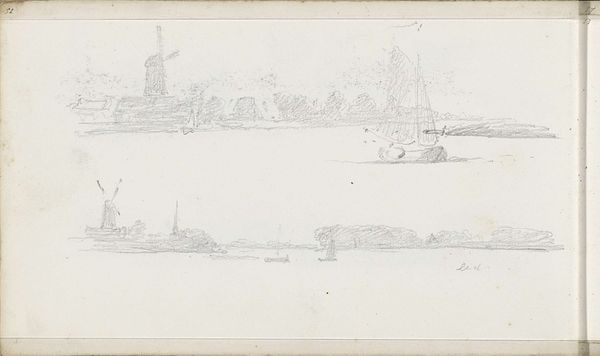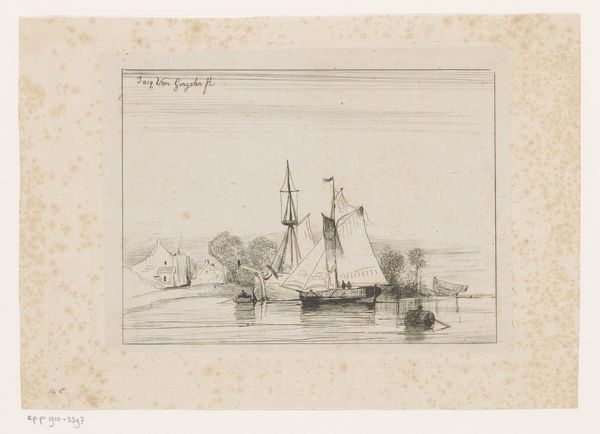
drawing, paper, pencil
#
drawing
#
amateur sketch
#
landscape
#
paper
#
pencil
#
watercolor
#
realism
Copyright: Rijks Museum: Open Domain
Curator: Ah, yes, here we have "Studieblad met roei- en zeilboten," which translates to "Study Sheet with Rowing and Sailing Boats," created by Arnoldus Johannes Eymer sometime between 1803 and 1818, rendered in pencil and watercolor on paper. Editor: Immediately, it strikes me as such a gentle, almost ghostly series of sketches. It feels more like a fleeting impression than a solid representation of these boats. Curator: It’s interesting that you say that, because I think Eymer was really trying to capture a specific sense of place and time. We see several different boat studies all on one page, maybe he was experimenting. Editor: Perhaps. But I also think it's more than that. I see this piece as a commentary on labor, particularly watermen in early 19th century Netherlands, and maybe their relation to the colonial endeavors. Curator: Oh, that’s a fascinating reading, because I honestly just got a very dreamy, meditative feeling from it. I suppose it reflects on that quiet observation period along canals of the Netherlands. The delicate use of watercolor evokes such a soft and atmospheric presence. Editor: Agreed, the materials themselves are important to note! The very lightness of touch, the unassertive nature of pencil and faint washes, subtly hints at the fragile socioeconomic status and conditions of maritime laborers during a turbulent time in Europe’s colonial expansions. Water as pathway and divider for people! Curator: That interpretation adds so much depth. You know, I originally saw it just as these tranquil representations, something rather straightforward and pleasant. Editor: And there’s nothing wrong with that, sometimes it is as simple as an afternoon captured on a piece of paper. And at other times there's also something darker lurking underneath the surface, as well. I do love the realism of the landscape. Curator: It's incredible how a few simple lines and washes can tell such different stories! It has me rethinking Eymer's intention, and makes me wonder about all that lay implicit behind the seeming quaint subject matter. Editor: Precisely! And how our position today might influence how we interpret those lines. Art, even in the faintest sketch, speaks in many tongues.
Comments
No comments
Be the first to comment and join the conversation on the ultimate creative platform.
